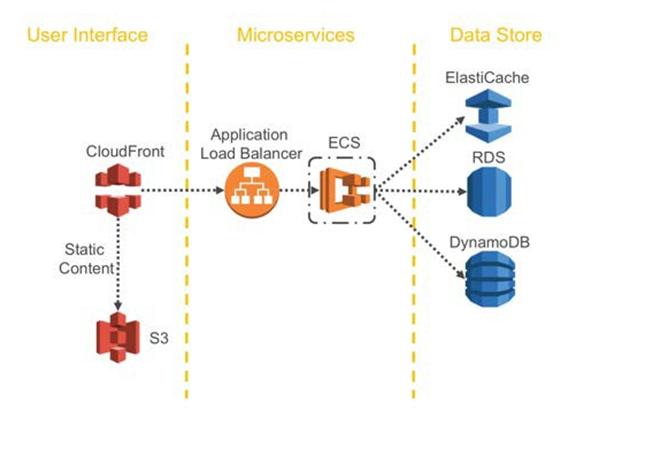Ideal Implementation for Least Administrative Effort
Question
Your team has been instructed to deploy a Microservices and an ETL based application onto AWS.
There is a requirement to manage the containerization of the application using Docker.
Which of the following would the ideal way to implement this with the least amount of administrative effort?
Answers
Explanations
Click on the arrows to vote for the correct answer
A. B. C. D.Answer - B.
The Elastic Container Service is a fully managed container orchestration service available in AWS.
The AWS Documentation mentions the following.
Amazon Elastic Container Service (Amazon ECS) is a highly scalable, high-performance container orchestration service that supports Docker containers.
It allows you to run and scale containerized applications on AWS easily.
Amazon ECS eliminates the need for you to install and operate your own container orchestration software, manage and scale a cluster of virtual machines, or schedule containers on those virtual machines.
Option A is incorrect because AWS OpsWorks helps to configure and operate applications in a cloud enterprise by using Puppet or Chef, which is not required in the question.
Option C is incorrect since even though Kubernetes is a fully managed solution, hosting it on EC2 Instances will incur more administrative headache.
Option D is incorrect because AWS CloudFormation is a service that helps you model and set up your Amazon Web Services resources.
But it does not manage the Docker containers like ECS.
For more information on Amazon ECS, please refer to the below Link-
https://aws.amazon.com/ecs/The following diagram illustrates an architectural implementation of microservices on AWS.
The API of a microservice is the central entry point for all client requests.
The application logic hides behind a set of programmatic interfaces, typically a RESTful web services API.
This API accepts and processes calls from clients and might implement functionality such as traffic management, request filtering, routing, caching, and authentication and authorization.
Many AWS customers use the Elastic Load Balancing (ELB) Application Load Balancer together with Amazon EC2 Container Service (Amazon ECS) and Auto Scaling to implement a microservices application.
The Application Load Balancer routes traffic based on advanced application-level information that includes the content of the request.
For more information, please refer to:
https://docs.aws.amazon.com/aws-technical-content/latest/microservices-on-aws/simple-microservices-architecture-on-aws.html
The ideal way to deploy a containerized microservices and ETL based application onto AWS with the least amount of administrative effort would be to use the Elastic Container Service (ECS) provided by AWS.
Here's why:
A. Use AWS OpsWorks: OpsWorks is a configuration management service that automates the deployment of applications, but it is not specifically designed for container orchestration. While it does support Docker, it is not the most ideal solution for containerization because it would require additional effort to manage the containerization of the application using Docker.
B. Use the Elastic Container Service: ECS is a fully-managed container orchestration service provided by AWS. With ECS, you can easily deploy, manage, and scale containerized applications using Docker containers. ECS abstracts away much of the underlying infrastructure, making it easier to deploy and manage containerized applications. ECS is also tightly integrated with other AWS services, such as Elastic Load Balancing and CloudWatch, making it easy to build scalable and highly available applications. Additionally, ECS supports both Fargate and EC2 launch types, providing flexibility in how you want to manage your infrastructure.
C. Deploy Kubernetes on EC2 Instances: Deploying Kubernetes on EC2 instances is another option, but it would require more administrative effort compared to using ECS. Kubernetes is a powerful and flexible container orchestration platform, but it also requires a steep learning curve and can be complex to set up and manage. Additionally, managing the underlying infrastructure, such as EC2 instances, can be time-consuming and require additional effort.
D. Use the CloudFormation service: CloudFormation is an Infrastructure as Code (IaC) service that allows you to define and manage your AWS infrastructure using templates. While CloudFormation can be used to deploy containerized applications, it is not specifically designed for container orchestration. You would still need to manage the containerization of the application using Docker, which would require additional effort.
In summary, the ideal way to deploy a containerized microservices and ETL based application onto AWS with the least amount of administrative effort would be to use the Elastic Container Service (ECS). ECS is a fully-managed container orchestration service provided by AWS that abstracts away much of the underlying infrastructure, making it easier to deploy and manage containerized applications.